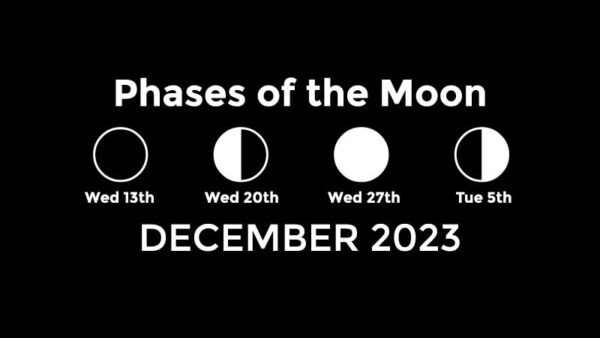Find out what to go out and look at this month
Mercury kicks off the month in the constellation of Ophiuchus (The Serpent-Bearer), but quickly transitions into Sagittarius (The Archer), during the initial week. On the evening of Monday, December 4th, Mercury reaches its greatest elongation in the eastern sky. However, as the month progresses, it steadily draws nearer to the Sun, ultimately vanishing into the Sun’s radiant glare by mid-December. Meanwhile, Venus graces the early morning hours at the beginning of December, appearing in the constellation of Virgo (The Virgin). As the month unfolds, Venus gracefully shifts into the constellation of Libra (The Scales). Mars, unfortunately, remains obscured by the Sun’s brilliance throughout December, rendering it invisible to the naked eye.
Jupiter, on the other hand, takes centre stage throughout the night, positioned between the constellations of Cetus (The Sea Monster), and Aries (The Ram). Saturn, another planetary gem, adorns the evening sky within the constellation of Aquarius (The Water Bearer), before setting later in the evening.
Uranus, the first of the Ice Giants, graces the night sky and can be spotted within the boundaries of Taurus (The Bull). Neptune, the most distant planet in our solar system, can be found nestled amid the constellations of Pisces (The Fish), and Cetus, offering a unique opportunity to spot this distant ice giant.
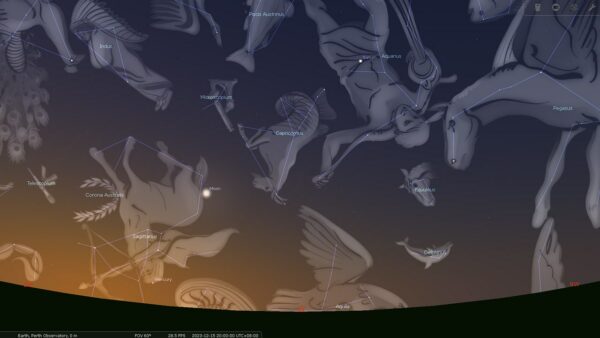
|
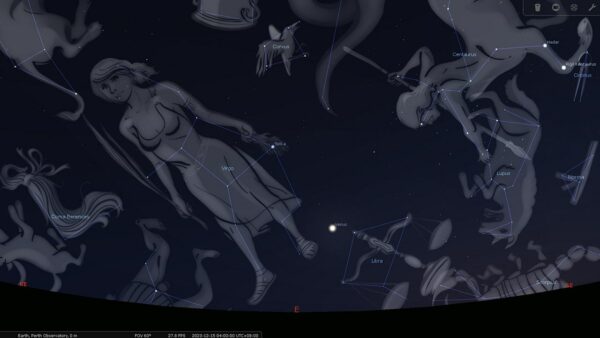
|
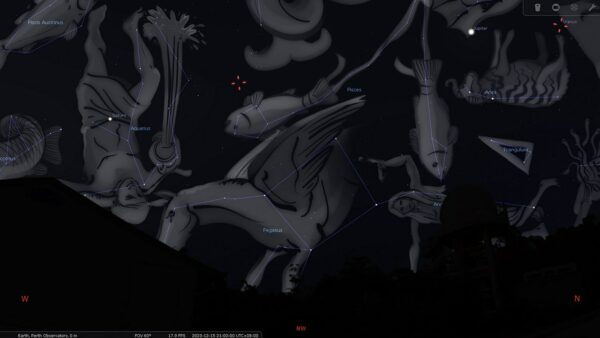
|
| Planet | When It Rises Or Sets |
|---|---|
| Mercury | At the start of December, it’ll set at 08:48 pm (AWST), and by the end of the month, it’ll be in the Sun’s glare |
| Venus | At the start of December, it’ll rises at 02:52 am (AWST), and by the end of the month, it’ll rises at 02:46 am (AWST) |
| Mars | Lost in the Sun’s glare |
| Jupiter | At the start of December, it’ll set at 03:29 am (AWST), and by the end of the month, it’ll set at 1:22 am (AWST) |
| Saturn | At the start of December, it’ll set at 00:28 am (AWST), and by the end of the month, it’ll set at 10:32 pm (AWST) |
| Uranus | At the start of December, it’ll set at 04:07 am (AWST), and by the end of the month, it’ll set at 02:05 am (AWST) |
| Neptune | At the start of December, it’ll set at 1:32 am (AWST), and by the end of the month, it’ll set at 11:30 pm (AWST) |
Conjunctions And Occultations:
Conjunctions involve object(s) in the Solar System and/or more distant objects, such as a star. It’s an apparent phenomenon in which multiple objects which aren’t close together appear close in the sky and it’s caused by the observer’s perspective.
In an occultation, an object passes across the line of sight between an observer and another object. A solar eclipse is an occultation of the Sun by the Moon.
- 01/12/23 – Conjunction of The Moon, Castor, and Pollux (Where to look)
- 04/12/23 – Conjunction of The Moon, Algieba, and Regulus (Where to look)
- 09/12/23 – Conjunction of The Moon, Venus, and Spica (Where to look)
- 10/12/23 – Conjunction of The Moon and Venus (Where to look)
- 14/12/23 – Conjunction of The The Moon and Mercury (Where to look)
- 18/12/23 – Conjunction of The Moon and Saturn (Where to look)
- 22/12/23 – Conjunction of The Moon and Jupiter (Where to look)
- 24/12/23 – Conjunction of The Moon and Pleiades (Where to look)
- 29/12/23 – Conjunction of The Moon, Castor, and Pollux (Where to look)
Astronomical Events This Month:
The Geminids Meteor Shower:
The Geminids Meteor Shower is a celestial spectacle of paramount significance in the southern hemisphere. Mark your calendars for the night of December 14th to 15th, as this is when the Geminids will reach their zenith. The shower graces our skies for just over two weeks, spanning from December 4th to December 20th.
If you’re fortunate enough to find yourself in a dark location in Western Australia, you can expect to witness around 50 meteors per hour. The optimal viewing time is around 2:00 am (AWST). However, if your location lies closer to the equator, where the Gemini constellation (The Twins), reigns high in the sky, your meteor count may soar to an impressive 120 per hour. Moreover, you’ll be treated to an absence of lunar light pollution, thanks to a slender Waxing Crescent Moon that sets just prior to 10:00 pm (AWST).
The radiant point for this meteor shower appears to originate from the Gemini constellation, with the luminous streaks brought to life by minuscule dust particles and meteors hurtling into our atmosphere at breathtaking velocities, ultimately succumbing to the fiery embrace of friction. When you gaze at Gemini, don’t fixate solely on the constellation itself. Instead, explore about 30 to 45 degrees to the left or right of Gemini, as the meteors may not necessarily emerge directly from the constellation. However, if you trace these meteoric streaks back to their radiant point, it leads you right back to the heart of Gemini.
The Geminids were first discovered in 1862 and owe their existence to Earth’s journey through the remnants of the tail of asteroid 3200 Phaethon. This peculiar celestial body, classified as a rock comet, exhibits characteristics shared with comets, including a comet-like tail and surface jets. Gemini, the constellation from which the meteor shower takes its name, graces our night sky around 10:00 pm. For an optimal viewing experience, venture out after midnight when Gemini stands higher in the sky, as the shower intensifies with the passing hours of the night.
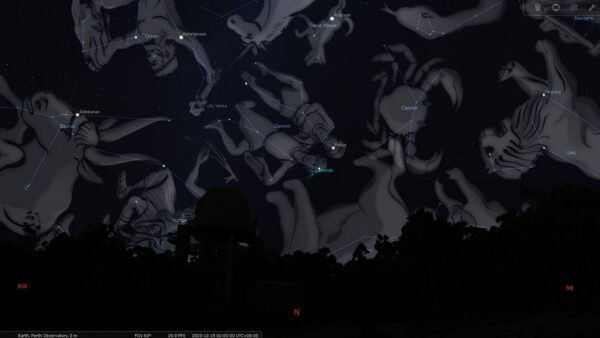
|
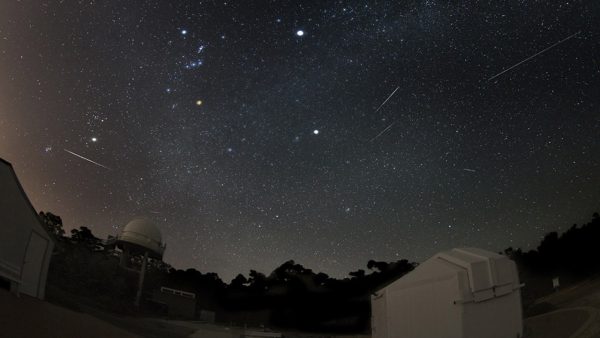
|
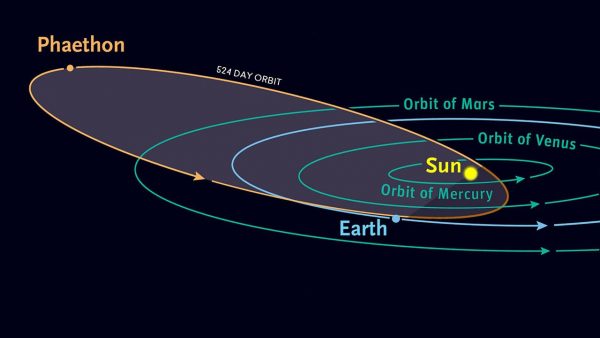
|
The December Solstice:
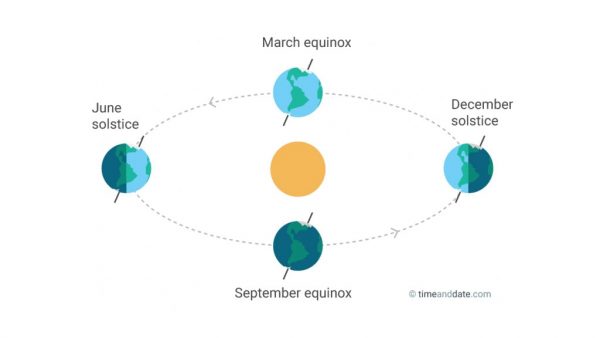
On the 22nd of December at 11:27 am (AWST), the December Solstice graces our calendar. This significant moment heralds the onset of astronomical summer for the southern hemisphere and the commencement of winter for the northern hemisphere. At this precise juncture, the Sun’s declination aligns perfectly at 23.5 degrees south, as perceived from our vantage point on Earth. The geographical parallel where the Sun directly hovers above during the December solstice is known as the Tropic of Capricorn. However, owing to the intricate celestial phenomenon of precession, the Sun now finds itself nestled within the astronomical constellation of Sagittarius in mid-December, marking a shift from historical references.
In the 21st century, the December solstice will grace our calendars on both the 21st and 22nd of December, until the year 2043, after which it will occasionally make its appearance on the 20th of December starting in 2080.
The December solstice signifies that the southern rotational pole of our Earth tilts towards the Sun, embarking on its lengthy, apparent journey northward, which will continue until June. This phenomenon, known as the Precession of the Equinoxes, unfolds over a vast expanse of time, taking approximately 26,000 years to complete a single cycle or “wobble.” To put it into perspective, within an average human lifespan of 72 years, the equinoctial points would have shifted by one degree, roughly equivalent to twice the diameter of a Full Moon. This enduring cosmic dance reminds us of the grandeur and scale of our ever-evolving celestial landscape.
Things to Look at This Month:
The Pleiades:
The Pleiades, renowned as Messier 45, the Seven Sisters, and named Subaru in Japan, represent a youthful gem among open star clusters. Nestled within its celestial embrace are hundreds of stars, although only a select few grace the naked eye with their brilliance. This dazzling congregation of stars came into being as a collective entity around 100 million years ago within a cosmic nebula, and they now reside a considerable 425 light-years distant from our Solar System.
When we gaze upon the heavens, the Pleiades manifest themselves to the left of the Taurus Constellation, a mesmerising spectacle that truly comes to life when observed through the aid of binoculars or a wide-field telescope. Each radiant point in this celestial gathering whispers tales of cosmic birth and evolution, offering a glimpse into the mysteries of our vast and intricate universe.
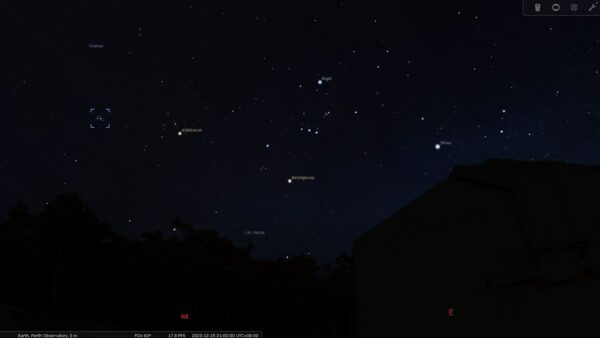
|
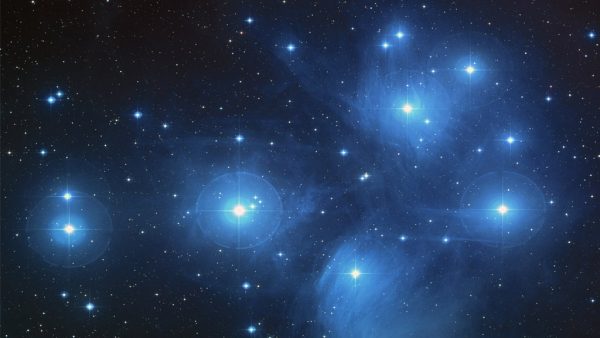
|
The Orion Nebula:
The Orion Nebula, scientifically catalogued as M42, emerges as a captivating diffuse nebula in the celestial tapestry, positioned to the north of Orion’s Belt, particularly visible to observers in the southern hemisphere. Nestled within the boundaries of the illustrious Orion constellation (The Hunter), this luminous celestial masterpiece stands out as one of the most radiant nebulae in our night skies, making it an exquisite sight for the unaided eye.
This awe-inspiring cosmic creation, the Orion Nebula, resides at a distant 1,344 light-years away from our Solar System. Its vast expanse spans an estimated 24 light-years in diameter, a testament to the sheer scale of celestial wonders. Beyond its sheer beauty, the Orion Nebula has unveiled profound insights into the intricate process of stellar and planetary formation. It serves as a cosmic laboratory, where collapsing clouds of gas and dust give birth to new stars and planetary systems, shedding light on the very genesis of celestial bodies in the cosmos.
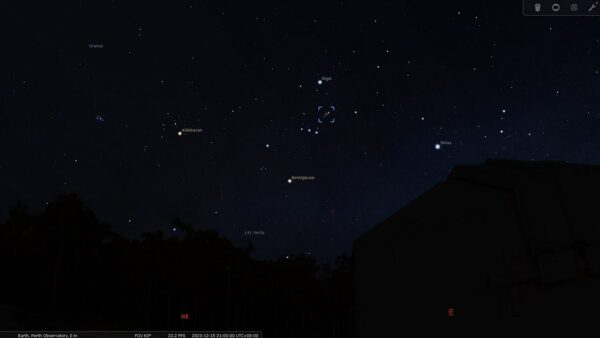
|
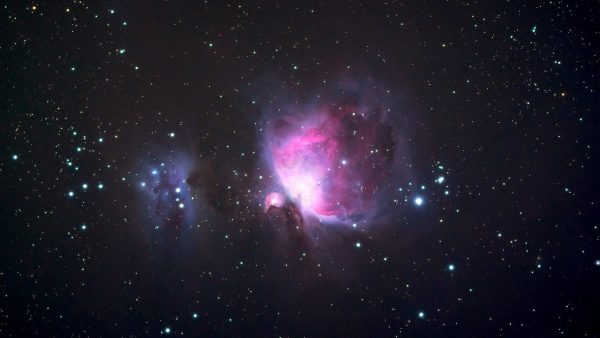
|
Rosette Nebula:
The Rosette Nebula, designated as NGC 2244, stands as a captivating HII region, situated near one extremity of an expansive giant molecular cloud, nestled within the cosmic confines of the Monoceros constellation (The Unicorn), within our Milky Way Galaxy. This celestial gem is adorned with an open cluster, where the remarkable birth of approximately 2,500 youthful stars takes place, originating from the very material that comprises the nebula itself. While the Rosette Nebula may prove elusive to the naked eye, even when observed through substantial telescopes, it truly shines as a splendid subject for astrophotography, with the accompanying star cluster offering a magnificent spectacle.
This captivating cluster and nebula duo are situated at an awe-inspiring distance of 5,000 light-years from our home planet, spanning an impressive diameter of around 130 light-years. The youthful vigour of the stars within the Rosette Nebula radiates energy that electrifies the nebula’s atoms, causing them to emit light akin to a radiant neon sign. This luminous phenomenon gives rise to the mesmerising emission nebula that graces our celestial canvas. The nebula’s substantial mass is estimated to be in the order of 10,000 solar masses, a testament to the cosmic forces at play within its boundaries. Notably, the focal point of ongoing star-forming activity resides within the dense molecular cloud situated to the southeast of the nebular bubble, where new stars continue to take shape.
Adding to its allure, the Rosette Nebula achieved a unique honour on April 16th, 2019, when the Oklahoma Legislature passed HB1292, designating it as the official state astronomical object of Oklahoma. Oklahoma Governor Kevin Stitt subsequently signed this designation into law on April 22nd, 2019, underscoring the nebula’s enduring fascination and cultural significance.
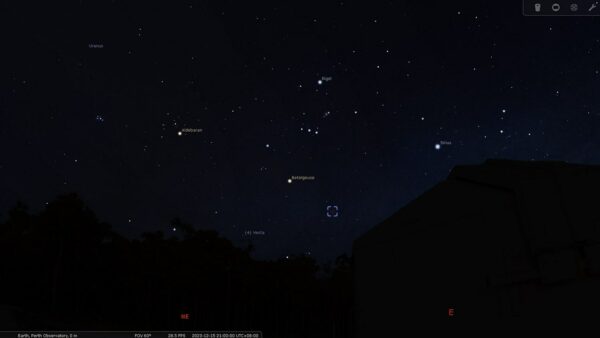
|
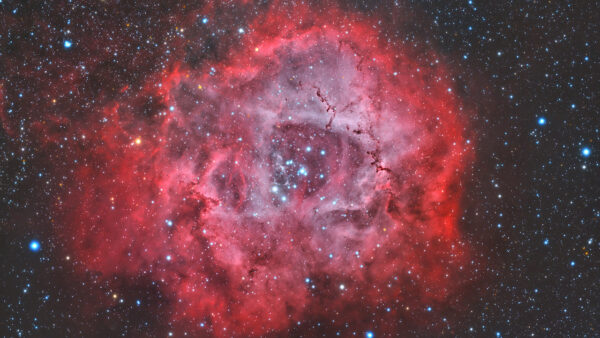
|
Tau Canis Majoris:
Tau Canis Majoris, officially designated as NGC 2362, stands as a mesmerising open cluster nestled within the constellation of Canis Major (The Dog). This captivating cosmic ensemble is located at an impressive distance of 5,000 light-years from our home planet and spans an expansive width of 10 light-years. Within its stellar embrace, one can find a gathering of approximately 100 to 150 stars, a youthful congregation with an age of merely 4 to 5 million years, making it remarkably young in cosmic terms.
The cluster’s historical journey began with its discovery by the keen eye of Giovanni Batista Hodierna before the year 1654. This celestial treasure was independently rediscovered by the eminent astronomer William Herschel in 1783, who aptly referred to it as a “beautiful cluster.” Further accolades for its celestial charm came from William Henry Smyth, who marvelled at its “beautiful appearance.” He noted the bright white star, Tau Canis Majoris, serving as its radiant centrepiece, adorned with a rich retinue of diminutive companions. These stars form a slightly elongated configuration, lending the cluster a distinctive and nearly vertical posture in our cosmic panorama.
Among this stellar cast, the luminary standout is Tau Canis Majoris itself, a beacon of luminosity that ranks among the most brilliant supergiants in our celestial repertoire. With an absolute magnitude of approximately -7, this star radiates with unparalleled brilliance. Amateur astronomers often affectionately refer to it as the ‘Mexican Jumping Star.’ This playful moniker arises from the intriguing optical illusion it presents when observed through telescopes. In this fascinating display, Tau Canis Majoris can seem to ‘jump around’ in relation to the other cluster stars when one gently taps the eyepiece. This captivating phenomenon is a testament to the stark contrast in brightness between this dazzling supergiant and its stellar companions, adding a touch of celestial magic to the observer’s experience.
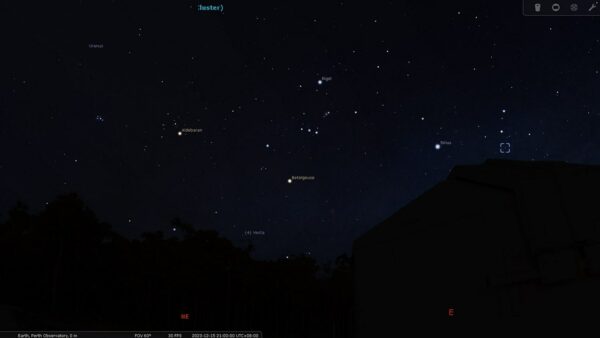
|
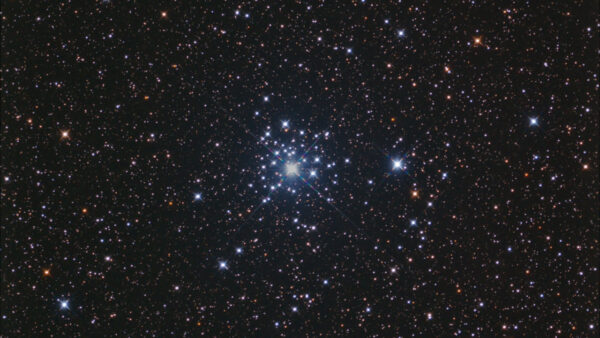
|
Phases Of The Moon:
